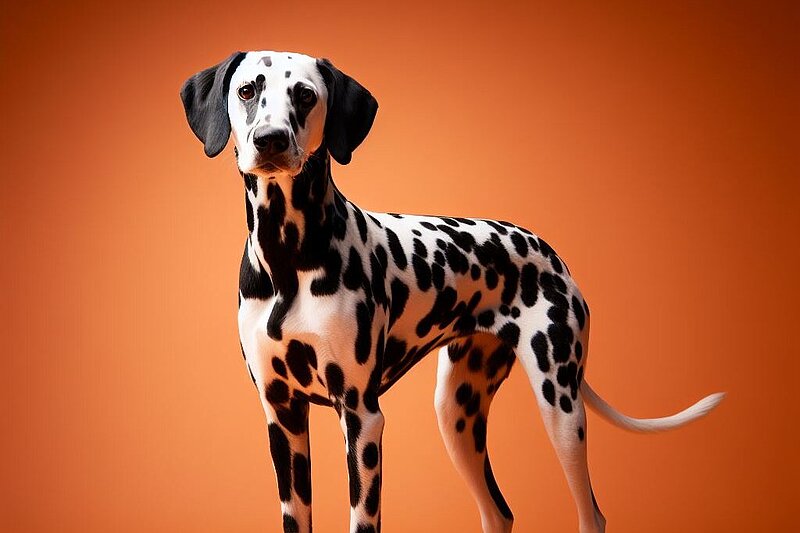The Dalmatian: The points make the difference
The history of Dalmatians: from the past to the present
The history of Dalmatians goes back a long way. They probably originated in the region of Dalmatia, today's Croatia, from where they got their name. The first records of Dalmatians can be found in Egyptian wall paintings and ancient Greek writings. In the 18th and 19th centuries, they became known as carriage companion dogs, as they accompanied and protected both aristocratic and bourgeois carriages. Today, they are valued above all as family and show dogs.
Character: Loyal and full of energy
Dalmatians are known for their friendly and outgoing nature. They are very energetic and love to move around. Their intelligence and play instinct make them excellent companions for active people. They are loyal and build a strong bond with their owners. Despite their friendly nature, they can also be wary and tend to be a little reserved around strangers, making them good watchdogs.
Appearance: A real eye-catcher
The most striking feature of the Dalmatian is their unique spots. These can be black or brown and are distributed over the entire white coat. Dalmatians have a slim, athletic build and are muscular. Their ears are of medium length and hang down to the side, while their eyes are usually dark and have an alert expression.
Grooming: How to keep your Dalmatian healthy and happy
Grooming a Dalmatian requires regular attention. Although their short coat is low-maintenance, they should be brushed regularly to remove loose hair and keep their skin healthy. Dalmatians tend to shed a lot, so regular vacuuming is a must. Their ears should also be checked and cleaned regularly to avoid infections.
Health: Robust, but susceptible
Dalmatians are generally robust dogs, but they do have some health problems typical of the breed. One common condition is deafness, which can be genetic. Around 10-12% of Dalmatians are deaf from birth. Kidney disease and urinary stones are also more common, so a special diet is often necessary. Regular veterinary examinations are important to detect health problems at an early stage.
Size and weight: the ideal companion for active people
Dalmatians belong to the medium-sized dog breeds. Males reach a shoulder height of 56-61 cm and weigh between 27-32 kg, while females have a height of 54-59 cm and a weight of 24-29 kg. Their athletic build requires sufficient exercise and activity.
Exercise: A bundle of energy
Dalmatians are very active dogs and need plenty of exercise. They are therefore more suitable for people who spend a lot of time outdoors and can take their dog with them on activities such as running, hiking or cycling. Dalmatians are only suitable for life in the city to a limited extent, unless they have regular access to large parks or other open spaces where they can run and play.
Training: intelligence is a challenge
Dalmatians are intelligent dogs that love to learn. Consistent but loving training is important to shape their sometimes headstrong character. They respond well to positive reinforcement and need mental challenges to keep them happy and busy. Dog sports such as agility or obedience are ideal for developing their mental and physical skills.
Behavior with children and other animals: A family dog
Dalmatians are generally very fond of children and can be good playmates for children. They are friendly and patient, but should always interact with small children under supervision to avoid misunderstandings. Dalmatians usually get along well with other pets, especially if they have been socialized early on. Their sociable nature makes them a pleasant member of the family.
Recognition by the FCI: Officially recognized
The Fédération Cynologique Internationale (FCI) has officially recognized the Dalmatian as an independent breed. It is listed in Group 6 of the running and welding dogs. This recognition confirms the breed's unique characteristics and high standard.
